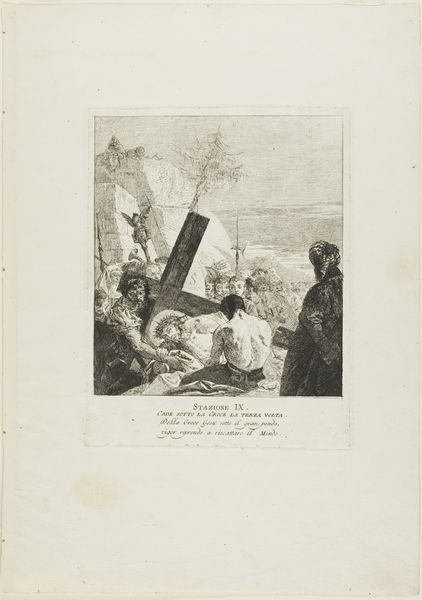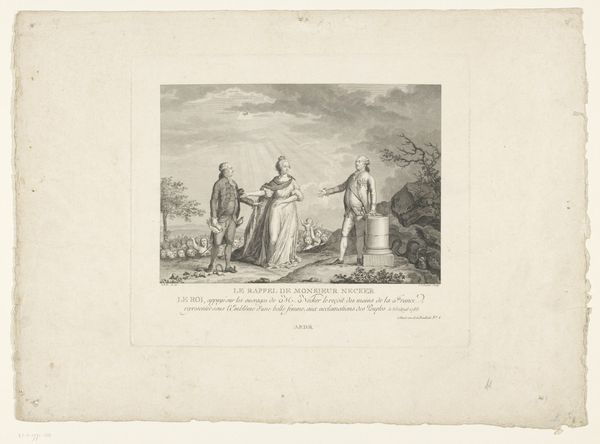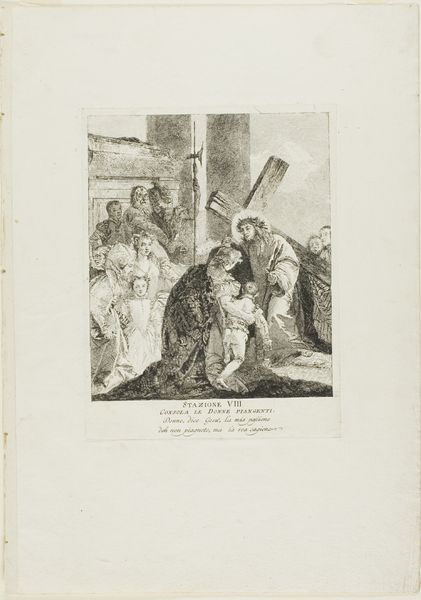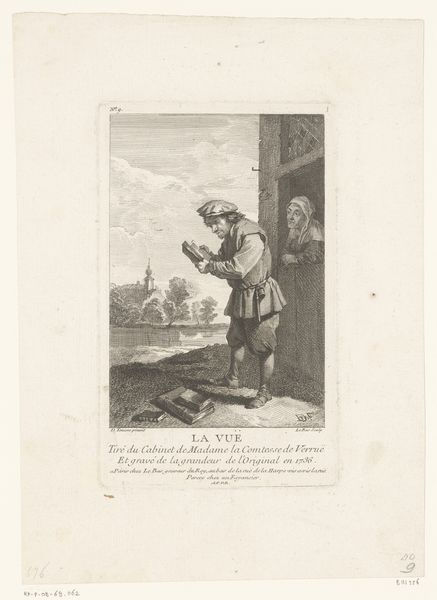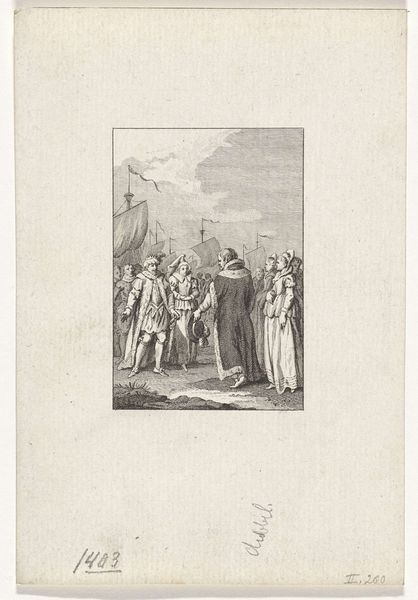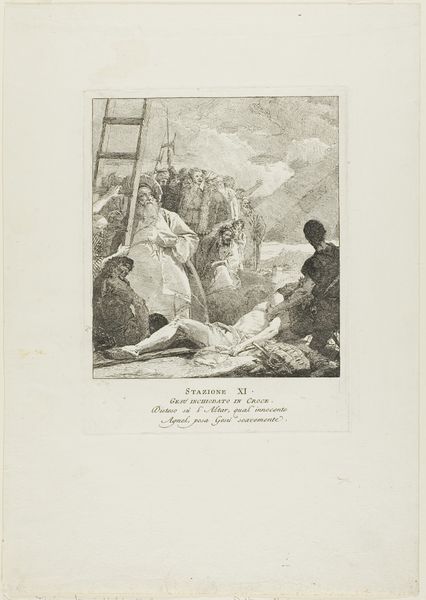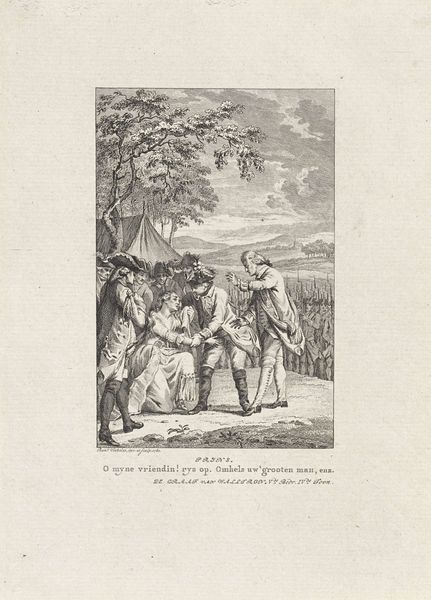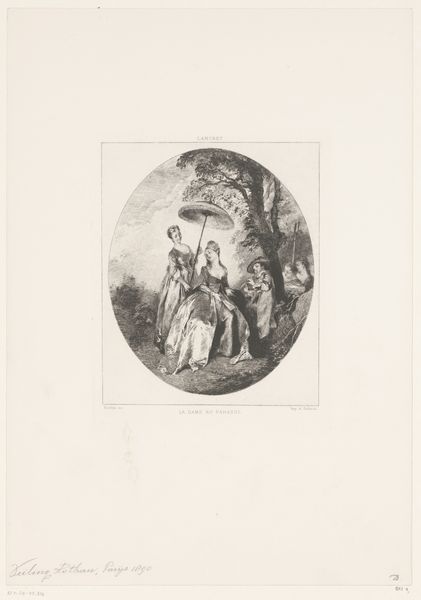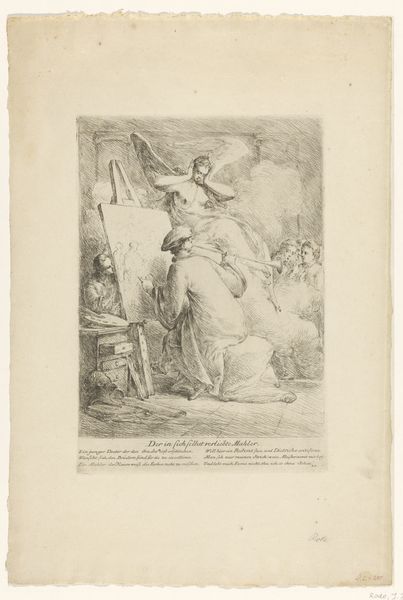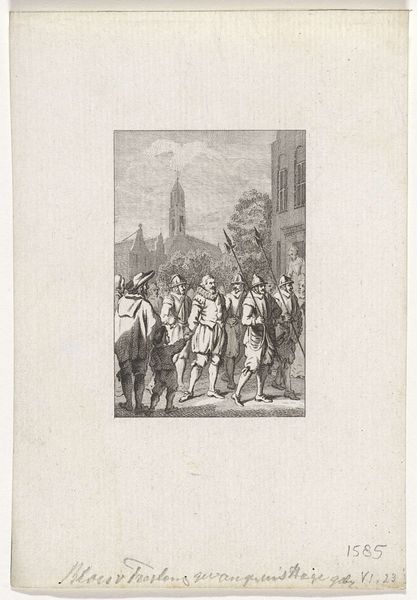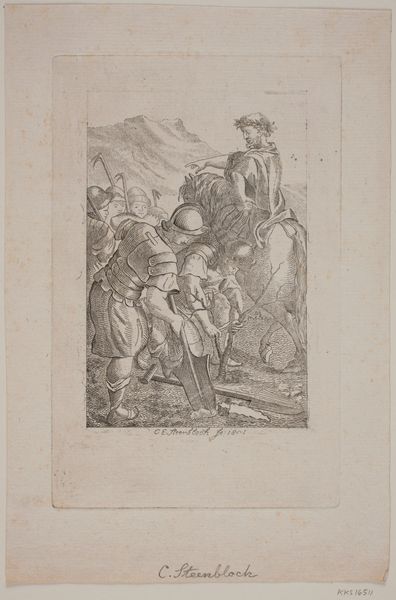
Christ's Face is Wiped by St. Veronica, plate six from Stations of the Cross c. 1748 - 1749
0:00
0:00
drawing, print, etching, paper
#
pencil drawn
#
drawing
# print
#
etching
#
paper
#
history-painting
#
italian-renaissance
#
italy
Dimensions: 219 × 186 mm
Copyright: Public Domain
Curator: This etching by Giovanni Domenico Tiepolo, completed around 1748-1749, captures the moment Christ's face is wiped by St. Veronica. It's part of his "Stations of the Cross" series. The image is delicate yet powerful, made with ink on paper. Editor: My immediate impression is one of profound vulnerability and uneven distribution of power. Christ's drooping pose compared with the guard dragging Him on powerfully reveals the cruel performance of domination at play. Curator: Absolutely. Tiepolo uses the graphic medium of etching to great effect, with expressive lines creating movement and emotion. There is such emotional energy. Look at the subtle variations in line weight which build up to this intense spiritual encounter. Editor: It is intriguing, this visual economy combined with maximal narrative import. One cannot ignore how Veronica subverts expected gender roles. In this historical setting where women's agency was routinely curtailed, she dares to actively confront systemic injustice. What statement is being made by immortalizing this seemingly insignificant gesture? Curator: I see the recurring symbol of the veil—or sudarium—as central here, pregnant with cultural memory. Consider how it echoes earlier traditions around holy relics, sacred objects carrying miraculous impressions or serving as potent connections to the divine. The story affirms the sacred nature of compassion and empathy. It mirrors collective memory within Catholicism. Editor: Yes, but isn't that sanctification of suffering somewhat problematic? Does this narrative offer empowerment, or merely endorse endurance within an unjust hierarchy? Are we, as a society, to only record instances where humanization occurred amidst dehumanization? Is that enough? Curator: Perhaps. But it underscores the role of individual agency even within oppressive systems. It shows the power of an act of human kindness, however small. It’s about recognizing ourselves in relation to larger cycles of history and spirituality. Editor: Well, examining it this way invites a reflection of today's societies that are also entrenched in cycles of inequality and oppression. The print challenges viewers to contemplate their own complicity, and to consider the bold transformative potential available to those that refuse to remain complacent in the face of such social injustice. Curator: Thank you, looking at the historical narrative, personal actions, and symbolic reverberations together grants a broader insight. Editor: Yes, considering the artistic rendering with today's social and political context in mind is essential to any serious engagement with art.
Comments
No comments
Be the first to comment and join the conversation on the ultimate creative platform.
